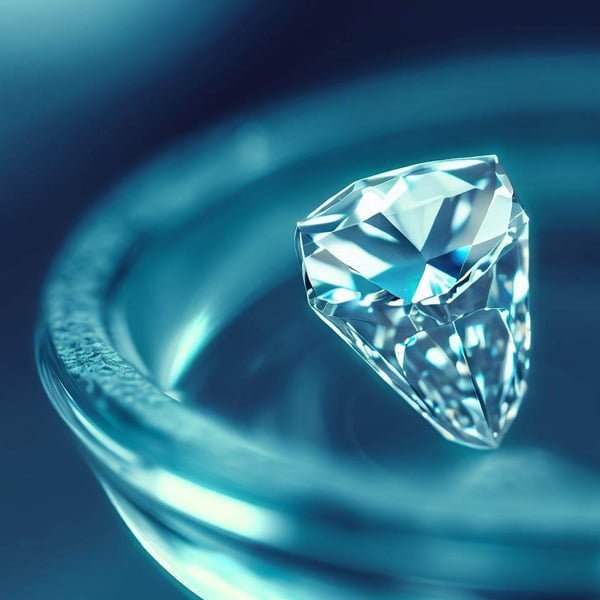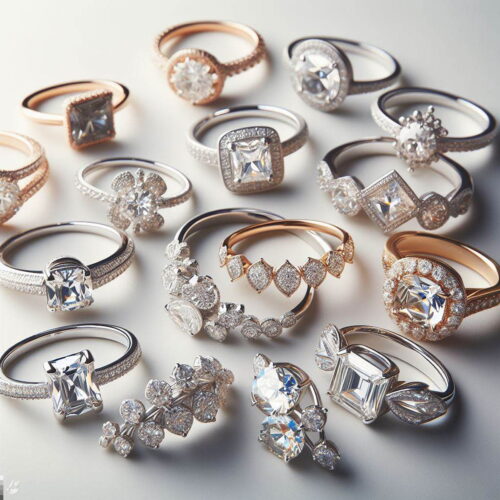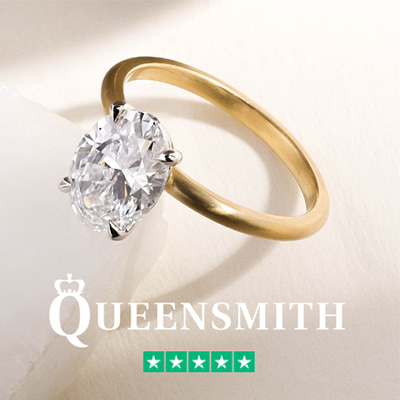Lab-grown diamonds have gained popularity in recent years for a variety of reasons. Here are some key advantages they have over natural diamonds:
- Ethical sourcing: Lab-grown diamonds are created in a controlled environment, which means there is no risk of them being associated with unethical mining practices, such as child labour or human rights abuses. This ensures that consumers can purchase diamonds with a clear conscience.
- Environmental impact: Mining natural diamonds can be ecologically destructive, involving the displacement of large volumes of the earth and the use of hazardous chemicals. Lab-grown diamonds, on the other hand, have a significantly smaller environmental footprint.
- Price: Lab-grown diamonds are generally more affordable than their natural counterparts because the production process is more efficient and less resource-intensive. This allows consumers to purchase larger, higher-quality diamonds at a lower price.
- Quality and consistency: Lab-grown diamonds are created using advanced technology that allows for precise control over the diamond’s characteristics, such as colour, clarity, and carat. This results in high-quality diamonds with fewer inclusions and imperfections.
- Customization: The controlled environment of lab-grown diamond production means that it is possible to create diamonds with specific characteristics or colours that may be difficult or impossible to find in nature.
- Supply: As lab-grown diamonds are created in a controlled environment, they are not subject to the same supply constraints as natural diamonds. This ensures that there is a steady supply of diamonds available to meet consumer demand.
The Process of Creating Lab-Grown Diamonds
These diamonds, created using cutting-edge technology, are virtually indistinguishable from natural diamonds in terms of their chemical, physical, and optical properties. In this article, we’ll explore the captivating process of creating lab-grown diamonds and discuss the two primary methods used: High-Pressure High Temperature (HPHT) and Chemical Vapour Deposition (CVD).
The Science Behind Lab-Grown Diamonds
Lab-grown diamonds are created by replicating the extreme conditions that occur deep within the Earth’s crust, where natural diamonds are formed. The process involves subjecting carbon to immense heat and pressure, causing the carbon atoms to bond together in a crystalline structure, ultimately creating a diamond. The resulting lab-grown diamonds possess the same characteristics and beauty as their natural counterparts.
High-Pressure High Temperature (HPHT)
The HPHT method is the older of the two primary techniques used to create lab-grown diamonds. It stimulates the natural environment in which diamonds form, subjecting a carbon source to intense heat and pressure.
- Starting Material
The process begins with a small piece of carbon, typically in the form of graphite. This carbon source serves as the foundation upon which the diamond crystal will grow.
- The HPHT Press
The carbon source is placed inside a specialised HPHT press, which is designed to generate the extreme conditions necessary for diamond formation. There are three main types of HPHT presses used in the industry: belt presses, cubic presses, and bar presses. Each press functions differently, but all are capable of producing the high pressure and temperature required for diamond growth.
- Diamond Formation
Once the carbon source is secured within the HPHT press, it is subjected to temperatures of around 1,400 to 1,600 degrees Celsius and pressures of approximately 5 to 6 gigapascals. Under these extreme conditions, the carbon atoms rearrange themselves and bond together, forming a diamond crystal.
- Cooling and Extraction
After the diamond has fully formed, the press is allowed to cool. The newly created diamond crystal is then carefully extracted from the press and prepared for further processing.


Chemical Vapour Deposition (CVD)
The CVD process is a newer method for creating lab-grown diamonds, offering a more controlled environment for diamond growth.
- Diamond Seed
The process begins with a small diamond seed, typically a thin slice of a natural or lab-grown diamond. This seed serves as the foundation for the new diamond crystal.
- Vacuum Chamber
The diamond seed is placed inside a vacuum chamber, which is then filled with a carbon-rich gas mixture, typically composed of methane and hydrogen.
- Gas Activation
The gas mixture within the vacuum chamber is heated to extremely high temperatures, usually between 900 and 1,200 degrees Celsius. This causes the gas molecules to become ionised and break down into their constituent atoms.
- Diamond Growth
The carbon atoms released during the gas activation process adhere to the surface of the diamond seed. Over time, they bond together in a crystalline structure, causing the diamond crystal to grow layer by layer.
- Harvesting and Processing
Once the diamond has reached the desired size, it is carefully removed from the vacuum chamber and processed. This may involve shaping, polishing, and grading the diamond before it is ready for use in jewellery or other applications.
The Place to Be for Superior Lab-Created Diamonds
Hatton Garden, located in the heart of London, has long been renowned for its bustling jewellery district, featuring an array of shops, wholesalers, and artisan jewellers. With a rich history spanning over a century, Hatton Garden has adapted to the ever-evolving world of jewellery, embracing the rise of lab-grown diamonds. Hatton Garden has emerged as a premier destination for the best lab-grown diamonds in the market.
Expertise and Experience
One of the primary reasons Hatton Garden stands out as a top destination for lab-grown diamonds is the exceptional expertise and experience of its jewellers. The area has a long-standing reputation for skilled craftsmen and artisans who have honed their craft through generations. This wealth of knowledge and expertise ensures that the lab-grown diamonds sold in Hatton Garden meet the highest standards of quality and workmanship.
Wide Selection and Customisation
Hatton Garden boasts an extensive array of jewellers and retailers, offering a diverse and expansive selection of lab-grown diamonds. This variety allows customers to find the perfect diamond for their unique preferences and requirements, whether it’s a specific shape, size, colour, or clarity. Furthermore, many jewellers in Hatton Garden offer bespoke services, allowing for the customisation of lab-grown diamond jewellery to create a truly one-of-a-kind piece.
Strict Quality Control and Certification
When purchasing lab-grown diamonds in Hatton Garden, customers can be confident in the quality and authenticity of their purchase. The jewellers in the area adhere to strict quality control measures, ensuring that all lab-grown diamonds are carefully inspected, graded, and certified. This guarantees that the diamonds meet the highest standards in terms of quality, sustainability, and ethical production.
Competitive Prices
Hatton Garden is well-known for offering competitive prices on its jewellery, including lab-grown diamonds. Due to the concentration of jewellers and wholesalers in the area, there is a healthy competition that drives down prices, allowing customers to find exceptional lab-grown diamonds at more affordable prices. This accessibility makes Hatton Garden an ideal destination for those looking for the perfect lab-grown diamond without breaking the bank.
Outstanding Customer Service
The jewellers in Hatton Garden pride themselves on providing an unparalleled level of customer service. They are committed to guiding customers through the process of selecting and purchasing lab-grown diamonds, ensuring they find the perfect gem for their needs. Their wealth of knowledge and expertise allows them to educate customers on the benefits and characteristics of lab-grown diamonds, making the buying experience as informative and enjoyable as possible.


















